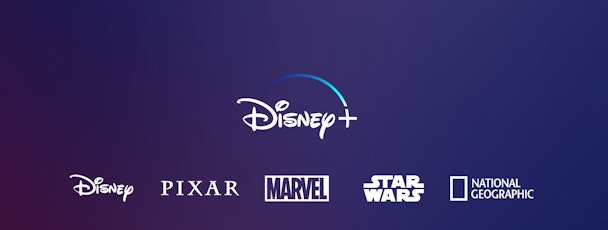Most Brits won't pay more than £20 a month for TV streaming: are ads the solution?
With adfree Apple TV+ and Disney Plus joining established subscription video on-demand services (SVOD) like Netflix and Amazon Prime in the market, the competition will be fierce with 60% of Brits reportedly unwilling to pay more than £20 a month.

Most Brits won't pay more than £20 a month for TV streaming: are ads the solution?
Research from adtech firm The Trade Desk of 953 UK consumers, aged 18 to 66 years old, looked to find how much the public was willing to pay for SVOD services – and position ads as a way of opening up access amid tight budgets.
Over a quarter (26%) said the £10 was the monthly maximum they were willing to spend. With Amazon Prime coming in at £7.99 a month and Netflix starting at £5.99, budgets appear to be low for this booming new sector of TV, and indicating the competition to come.
Almost all (90%) of respondents said they currently subscribe to at least one streaming service. But showing where the potential opportunity is, 59% said they would accept advertising on TV streaming services like Netflix in exchange for a free subscription. A further 47% would accept ads for a reduction in their subscription fees.
The research highlighted that the ads should not be interruptive, the era of ‘ad break’ may be over, however, 87% of respondents would be open to seeing ads before their content if they were to receive it for free.
Dave Castell, general manager of inventory and partnerships at The Trade Desk, said: “It’s no surprise that so many Brits have signed up to streaming services - a move that has further bolstered the UK’s position as one of the leading TV industries globally. But while people want to access premium content, there’s a limit to how much they’re willing to spend on it.
“With numerous new services set to enter an already-saturated market over the coming months, I believe that the ad-free subscription model currently favoured by many of the big players simply won’t generate the capital needed to create the content viewers crave.”
Driving this will be the increasing pressure over rights to popular back-catalogs of shows. But he agreed that “companies must be creative and innovative in how they incorporate advertising into the digital viewing experience” leaning on relevance, timing and a clearly illustrated value exchange.
Brand Recognition
SVODs with the highest recognition and brand equity are most likely to be the winners in the streaming war – especially if the public purse strings are as tight as research suggests.
Netflix remains the most positively received SVOD brand the world over, according to Kantar.
Graham Staplehurst, global strategy director for BrandZ at Kantar, said: “All the new launches are essentially challenging Netflix, which has the advantages of brand recognition, well-respected content and consumer inertia. Few consumers will subscribe to more than one or two services so unless they offer some other advantage such as free delivery in the case of Amazon Prime, then rival brands will have to demonstrate a powerful appeal to consumers. Right now, none of the competition has done that.”
Disney+, which launched this week (12 November), on the other hand, has to prove that it has “adult appeal”. While Disney is worth $57bn and grew 6% over the last 12 months, in TV it has had an appeal “limited to families with young children,” a perception that could harm it going forward when it pushes into quality adult content, music and sport.
Amazon Prime’s brand equity has been “slowly strengthening”. 75% of US consumers claim they currently use Amazon, according to BrandZ, but the video wing has much less recognition. As a cornerstone of the Prime membership offering, it is a different proposition from rivals with “very low churn and strong retention rates”.
Apple TV+ “has so far had very little exposure and is strongly polarizing” and has a lot to live up to proving that its premium offering extends to content. The service is laden with a handful of expensive shows but lacks the archive of rivals.
“HBO and Hulu are in the middle ground," the report suggested , speculating that consumers may be waiting to see what the next big Game of Thrones vehicle could be. Meanwhile Hulu, now owned by Disney, will soon be packaged with select Disney+ packages.
Recently released research from Hub studied brand awareness of new US players, now-released Disney+, Apple TV+ and 2020's NBC Peacock and HBO Max. Disney led brand recognition and subscription intent, indicating it could take an early lead.

